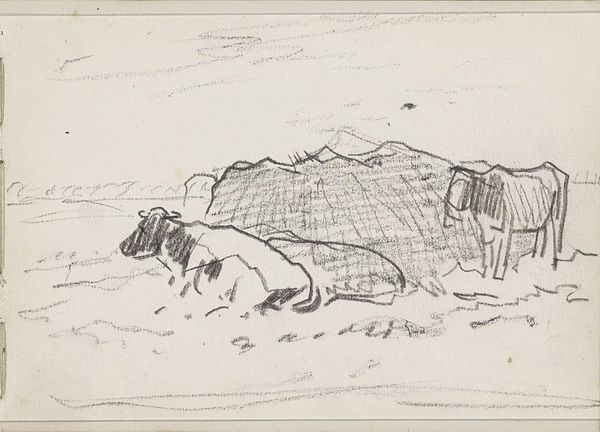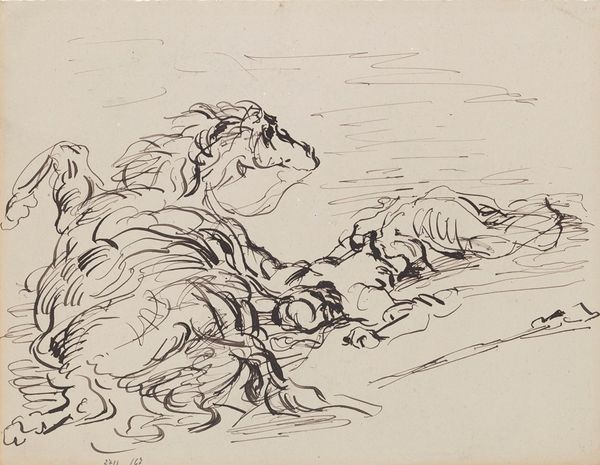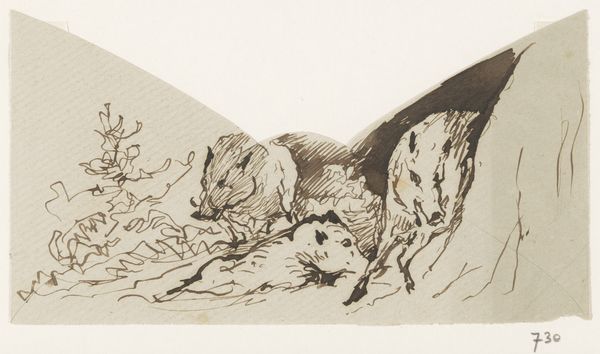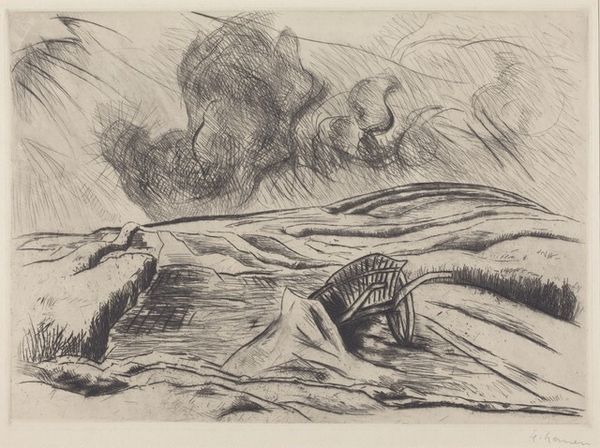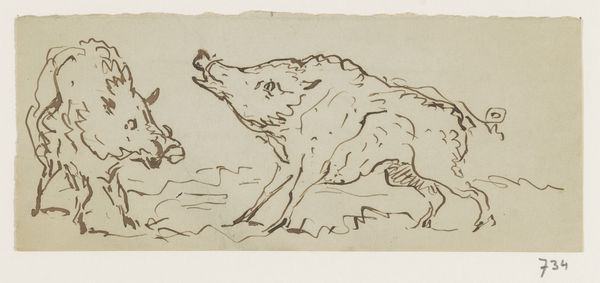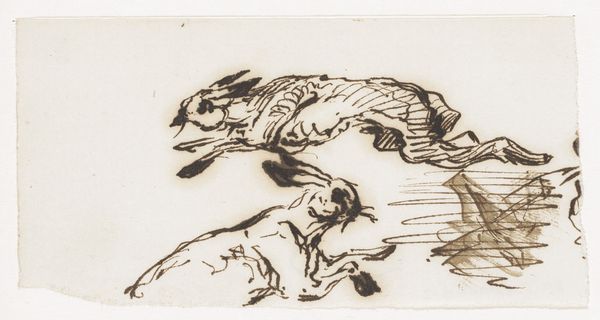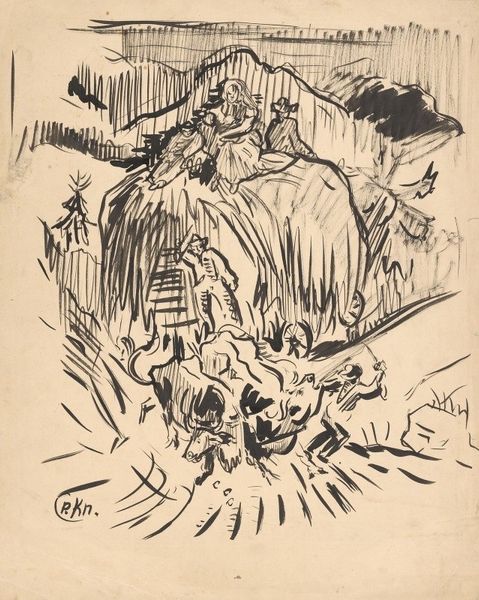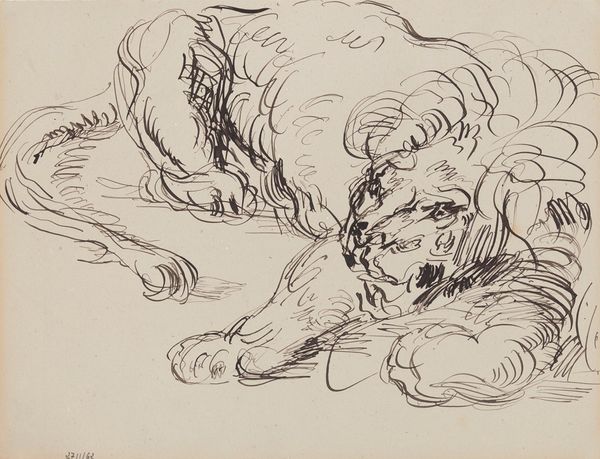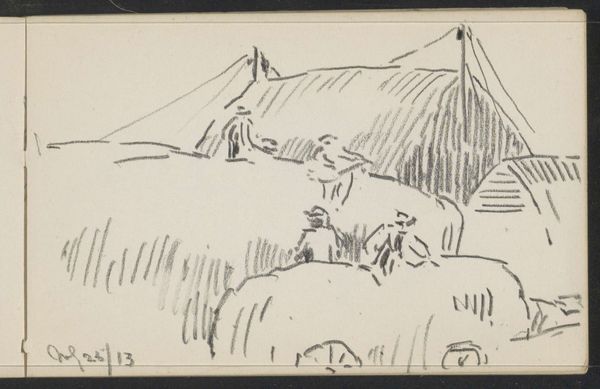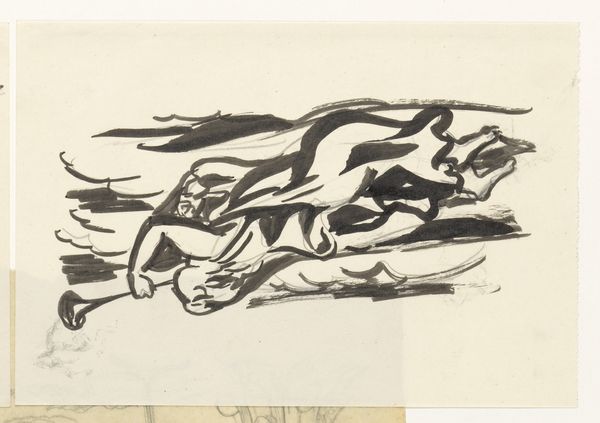
drawing, print, etching, ink
#
drawing
# print
#
etching
#
landscape
#
figuration
#
ink
#
expressionism
#
line
Dimensions: plate: 19.7 × 24.6 cm (7 3/4 × 9 11/16 in.) sheet: 29.4 × 39.1 cm (11 9/16 × 15 3/8 in.)
Copyright: National Gallery of Art: CC0 1.0
Paul Kleinschmidt etched these "Pigs" in 1922. Consider the pig itself: across time, it has been a symbol laden with contradiction. In some cultures, it signifies abundance and prosperity, linked to fertility rites and agricultural success. Yet, it often carries connotations of impurity and gluttony, shunned in various religious practices. Observe how Kleinschmidt's pigs sprawl, seemingly unconcerned with the viewer. Their blunt forms, rendered with bold lines, evoke a primal, almost grotesque energy. This is not the idealized pastoral scene but a raw glimpse into animal existence. Think of the pig in the ancient Greek myth of Circe, who transformed men into swine, symbolizing the degradation of human intellect and morality. Or recall the medieval "Pig Trials," where pigs were held accountable for human crimes, reflecting a distorted sense of justice. Perhaps Kleinschmidt taps into a collective memory of these conflicting associations, inviting us to confront our complex relationship with nature and our own animalistic impulses.
Comments
No comments
Be the first to comment and join the conversation on the ultimate creative platform.
